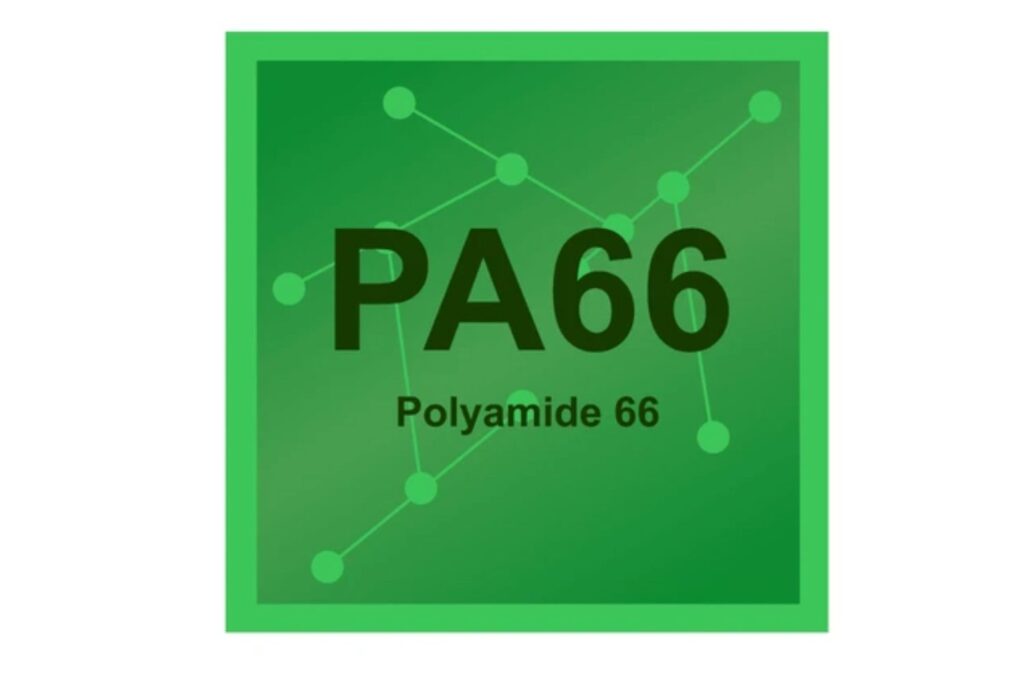
PA66, commonly known as Nylon 66, is a semicrystalline polyamide polymer made of hexamethylenediamine and adipic acid. It offers high strength, thermal stability, and chemical resistance. This article explores PA66’s composition, performance, grades, applications, and innovation trends. We’ll also highlight how the PatSnap Eureka AI Agent supports materials R&D and competitive insights.
What is PA66 Nylon?
PA66 is synthesized by polycondensation of two monomers: hexamethylenediamine and adipic acid, resulting in a repeat unit –NH–(CH₂)₆–NH–CO–(CH₂)₄–CO–. The polymer forms strong hydrogen bonds, giving it a high melting point (~260 °C), good rigidity, and abrasion resistance.

Composition & Properties / Performance
Chemical & Identifiers
- Molecular Formula (repeat unit): (C₁₂H₂₂N₂O₂)ₙ
- CAS Number: 32131-17-2
- Grades: Unfilled, glass-filled, mineral-filled, flame-retardant
Physical & Mechanical Properties of PA66
| Property | Value Range |
|---|---|
| Density | 1.14–1.15 g/cm³ |
| Melting Point | ~255–265 °C |
| Glass Transition | ~50 °C |
| Tensile Strength (unfilled) | ~75 MPa |
| Tensile Strength (GF‑25%) | ~160 MPa |
| Modulus (unfilled) | ~2.7 GPa |
| Modulus (GF‑25%) | ~7 GPa |
| Elongation at Break | ~50% (unfilled), ~2% (GF‑25%) |
| Impact Strength (Charpy) | ~70 kJ/m² (unfilled) |
| Heat Deflection Temp (GF‑25%) | ~200 °C |
| Water Absorption (24 h) | ~1.5–2.5% |
Functional Performance
- Excellent wear and abrasion resistance
- High fatigue strength in cyclic use
- Good dielectric properties
- Stable under oils, fuels, and solvents
- Modifiable via fillers for UV, flame, conductivity
Material Grades & Designations of of PA66
Standards & Grade IDs
| Standard | Grade |
|---|---|
| ASTM/ISO | PA66 |
| UL | 94 V‑2, 5VA |
| DIN | PA66 |
| JIS | PA66 |
| GB | PA66 |
Typical Fillers & Data Summary
| Grade | Filler | Key Property Highlights |
|---|---|---|
| PA66-unfilled | — | High toughness, general-purpose |
| GF‑30 PA66 | 30% Glass Fiber | High stiffness, heat deflection ~200 °C |
| FR PA66 | Phosphorous/Br | UL94 V‑0 flame rating |
Application Landscape of PA66
PA66 is ideal for mechanical parts exposed to heat, chemicals, or wear. It’s especially prevalent in:
Automotive & Transportation
- Under-hood parts: intake manifolds, radiator end tanks
- Connectors & hoses: fuel line fittings, electrical connectors
Electrical & Electronics
- Insulating components: plugs, sockets
- Cable ties and clips: mechanical strength, flame resistance
Industrial & Mechanical
- Gears, bearings: low friction and wear
- Pump components, conveyor parts: chemical and temperature stability
Consumer & Appliances
- Power tool housings: impact resistance
- Kitchenware handles, textile components
Application Trends
- Expansion into PA66 blends (e.g., with PA6 for toughness)
- Use in E-mobility: motor connectors, battery housing parts
- Rising demand for flame-retardant grades in global electronics
PA66 vs Other Similar Materials
| Feature | PA66 | PA6 | POM (Delrin) | PEEK |
|---|---|---|---|---|
| Tensile Strength | High | Moderate | Moderate | Very High |
| Heat Resistance | Up to 260 °C | Up to 220 °C | Up to 100 °C | Up to 260 °C |
| Moisture Absorption | Moderate | High | Low | Very Low |
| Wear Resistance | Excellent | Good | Excellent | Excellent |
| Cost | Moderate | Low | Moderate | High |
Advantages of PA66
- High mechanical strength, even at elevated temperatures
- Superior abrasion, fatigue, and chemical resistance
- Adaptable via fillers for enhanced properties
- Moldable with conventional injection molding
- Cost-effective for high-volume, engineered parts
Innovations & Technology of of PA66
Latest Developments
- Nano-Fillers and Hybrid Reinforcement
- Incorporating nanoclays and carbon nanotubes yields higher stiffness and flame performance
- 3D Printing – Laser Sintering
- PA66 powders used in SLS additive manufacturing, enabling complex geometries with high properties
- Low-Emission Grades
- New formulations reduce VOCs during melt-processing, ideal for indoor applications
- Surface Coatings & Thin-Film Treatments
- Plasma and corona treatments yield improved adhesion, wear, and friction control
Sustainability & Environmental Impact
- PA66 is partially recyclable, but high melting limits reuse
- Lifetime durability reduces waste from premature failure
- Energy-intensive production from petroleum feedstock
- No biodegradability; disposal must follow plastic recycling rules
- Compliance: REACH, RoHS, UL94, FDA for food contact, ISO 10993 (medical-grade blends)
PatSnap Eureka AI Agent Capabilities
PatSnap Eureka AI Agent enables:
- Analysis of novel PA66 nanocomposites and flame-retardant blends
- Mapping of patent trends in SLS-grade PA66 powders
- Spotting high-performance additive developments for wear criteria
- Identifying regulatory shifts affecting PA66, such as VOC or halogen bans
- Benchmarking global material suppliers and specialty compounders
Conclusion
PA66 (Nylon 66) remains a reliable choice when parts require strength, high-temperature stability, and resistance to harsh environments. With innovation in nanocomposites, AM compatibility, and eco-friendly grades, it continues to evolve across industries.
Using PatSnap Eureka helps you monitor PA66 development, spot new IP, and secure leading-edge materials for your manufacturing needs.
FAQs
Yes—FDA-compliant, but formulations must avoid additives that may leach.
Unfilled PA66 melts around 255 °C; glass-filled grades maintain strength to ~200 °C.
Yes—it can absorb 1–3%, which may affect dimensions and mechanical properties.
Yes—mechanical recycling is possible, though repeated melting may reduce performance.
Yes. PA66 powders are used in SLS, enabling strong, custom components with complex design.
For more scientific explanations of PA66 , try PatSnap Eureka AI Agent.



